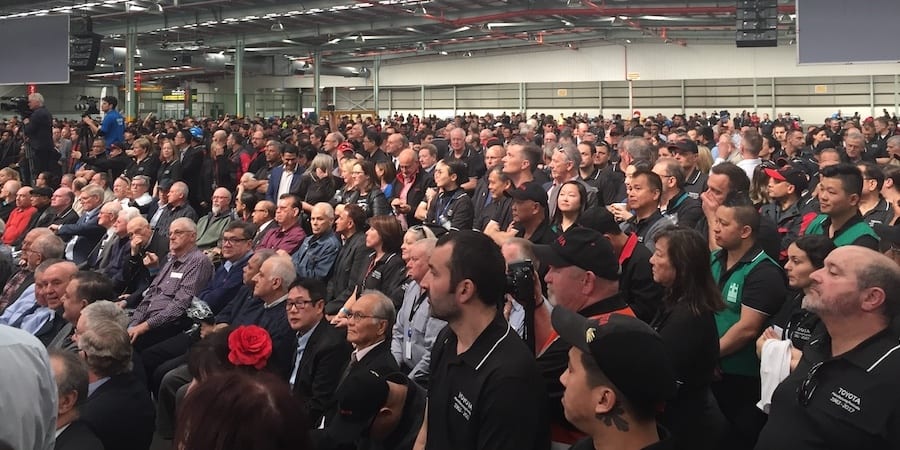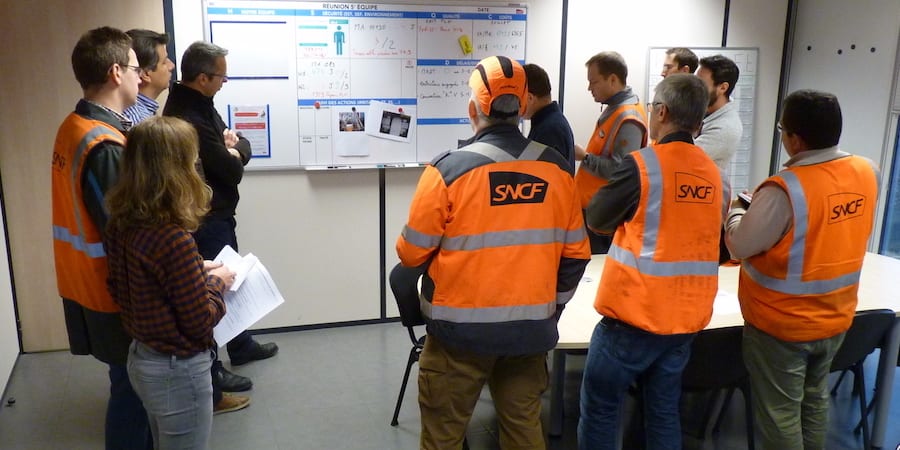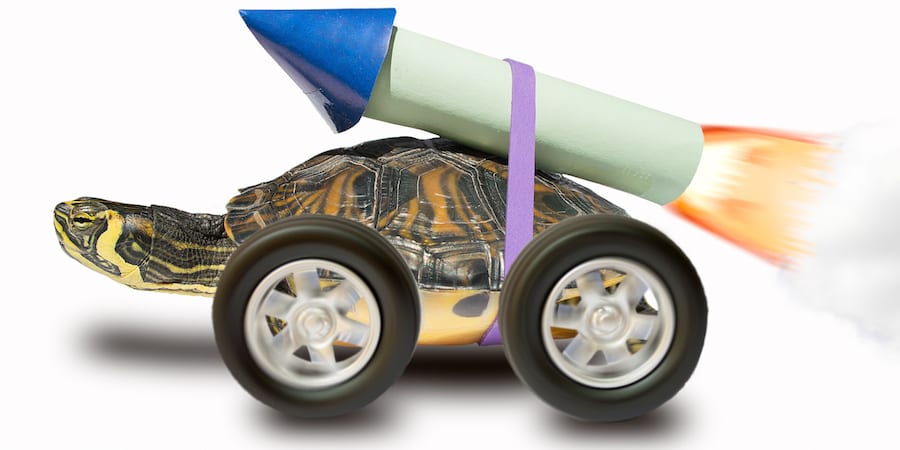
Breaking new ground in product development
INTERVIEW – Drawing on 33 years of experience working in product development at Caterpillar, the interviewee reflects on lean in engineering.
INTERVIEWEE: Steve Shoemaker, former Vice President of Engineering, Caterpillar Inc.
Roberto Priolo: You have an impressive career in Caterpillar. Would you take us through it, while touching on some of the key milestones in the company’s LPPD journey?
Steve Shoemaker: I have spent 33 years at Caterpillar and, for the first decade or so, I thought that lean was something the factories did. I didn’t appreciate the opportunities that existed beyond the factory floor. It wasn’t until 2003 that I really started to develop a proper understanding of Lean Thinking.
A turning point for me was reading Michael Kennedy’s Product Development for the Lean Enterprise – we called it the “blue book”. It talked about how you could get four times more productivity out of your engineers. As a manager, who wouldn’t want that?! I credit that book with getting me to really think about Lean, together with The Machine the Changed the World, by Daniel Roos, Daniel Jones and Jim Womack, and Lean Product and Process Development by Dr. Allen Ward.
From that moment on, there were four major phases in my career. First, I was Technical Manager at Cat Electronics, where we developed the computers and displays that controlled the engines, machines, and transmissions. Anything you could put software on was under our division’s control. We collaborated a lot with suppliers on products, and that’s when I discovered how important a solid supply chain is for a company like ours.
Later on, as I began to explore the Toyota Way as described by Jeff Liker, I moved from the component world (I grew up in engines and was now in electronics) to the machine side of the business. In the Building Construction Products division, where small machines are made, we ended up being faced with tremendous business challenges. I joined the division in 2006 and a couple of years later the financial crisis hit, which was a huge problem for a business that depends so heavily on the housing market. We had to turn the business around. I was stewarding the engineering organization at the time, but Caterpillar on a broader scale was already working with Dr Liker to get the Toyota Way into our factories. We looked for ways to also be involved in the lean work and I soon started working with John Drogosz, who is now leading the product element of LPPD at the Lean Enterprise Institute.
I then went on to our plant in Akashi, Japan, and became Chief Engineer of the Excavation Division. Living in Japan with that role is when I truly started to understand what lean was all about. After all, I was living in the society the methodology had come from! Over the years, I visited Toyota and its suppliers several times, which allowed me to “connect the dots” and understand what was making Akashi’s product development so effective. During my tenure, we re-platformed our product line and developed a new excavator portfolio. Looking back, I realize that the most important lesson I learned there is how critical people development and respect for people are.
After five years at Akashi, I was asked to move back to the US and lead engineering for the Earthmoving Division, which was the core business of Caterpillar’s machine business and designs bulldozers, tracked and wheeled loaders, pipe layers, paving equipment, and motor graders. That was my last role before I retired from the company. The division was too expensive, our quality wasn’t where it needed to be, and the perception from the rest of the organization was that we “needed to be fixed”. Over time, we made huge inroads, improving our quality by 50% and reducing our expenses to bring an additional $200 million into our bottom line. Critically, we reinvented the belief that the company is the best place in the world to be an engineer, and we did that through many of the lean principles. Around 2018, when Jim Morgan’s Designing the Future came out, we started to work much more closely with LEI and got amazing results.
RP: When you started out, there wasn’t a ton of information available on LPPD out there. There weren’t many books, besides Michael Kennedy’s. Where did you get your inspiration?
SS: The “blue book” is what we leaned on for many of our activities. We did book clubs in every division I went to, and I gave the books to all my bosses. But yes, there wasn’t a lot at the time. There were elements of LPPD in Liker’s The Toyota Way, but it wasn’t until Jim Morgan’s The Toyota Product Development System was published that we finally got our “textbook”. It truly became our roadmap.
RP: Lean teaches us the importance of making the work visible. How difficult is that in an LPPD environment?
SS: If you have one program, you can easily get your head around it – you set up an obeya, you put up a VSM, etc. In my last role at Caterpillar, however, I was running the engineering organization for a $7 billion business, with hundreds of programs at any one time, 400 product improvement activities going on simultaneously, and hundreds of millions of dollars in R&E. In such a scenario, seeing the bottlenecks is incredibly difficult (especially in an environment that had migrated to digital), which is why we came up with the Design Factory concept. It allowed us to see the flow of work – something that’s easy to do in a factory, but very difficult to do in the design world. You walk into a design office, and you can’t immediately tell whether or not we are behind, which engineers are overloaded, and so on. The Design Factory helped us to understand the process, making sure it is stable so it can be improved.
I’ll give you an example. Shortly after I got to the Earth-moving division, one of our teams called and asked for five more engineers. They said they were behind and had to get drawings released. “Are purchasing and manufacturing ready to catch the drawings when you release them?” I asked. They didn’t know, but insisted they were behind and needed the extra help. They didn’t get the engineers – and were mad about it – but I was trying to show them that that there is no point in piling up work if there is no one ready to receive it. In the world of knowledge, this kind of situations are very common, precisely because the flow is so hard to see.
RP: As you look back on your career at Caterpillar, what has been your biggest challenge?
SS: One of the most difficult things I have had to do was convincing our engineers that the suppliers building the components we needed and that the factory assembling the machines were really our customers. People thought the customer is the person driving the bulldozer. That’s true, of course, but so is the the next person or process in the value stream. Identifying your customer is without a doubt one of the most important elements in Lean Thinking applied to knowledge creation.
In this respect, my years at Akashi were absolutely eye opening. There, we had International Concurrent Product and Process Development teams, whose purpose was to have manufacturing, engineering, and supply management address problems together (whether it was a cost or quality issue or approaching the development of a new product). It seems so simple and basic, but it’s very complicated, as all these functions have a different focus.
RP: What would you say LPPD means to Caterpillar?
SS: In my last division, Earthmoving, we certainly got a better appreciation for process management. As I mentioned, we got great results there, including a 50% quality improvement, but I believe that the biggest gift LPPD gave us was an understanding of how important collaboration is. We started considering it a defect when a supplier asked for a deviation, or when the factory couldn’t properly assemble a product. That realization was monumental and opened a whole new set of opportunities.
RP: From a leadership perspective, what behaviors enable this kind of system?
SS: There is an equation Jim Morgan refers to, which I love: the management system equals leadership behaviors times the operating system. What that means is that, when leadership behaviors are good, results compound and things improve. Conversely, when behaviors are bad, they can break a business. In most companies, traditional management behaviors are rewarded, and it’s very common to give engineers unrealistic objectives and tell them to work harder. We’d never do that on the factory floor, so why do we do it to engineers and knowledge workers? Because we don’t see their work!
The lean approach is totally different. It encourages you to listen to people doing the work, understanding what they need to get the work done, and then supporting them. As a lean leader, you have to develp people so they have the knowledge to know the right things to do and the time to do those things the first time. The time aspect is so important or you’ll find people cutting corners to hit deadlines.
In truth, being a lean leader is much easier than being a traditional manager. Lean managers rely on people and support them, whereas traditional managers think they need to have all the answers. It just makes more sense to be a lean manager, and if there still aren’t many is because lean is still unconventional, somehow. I have had very uncomfortable discussions with my bosses over the years, trying to help them see that it takes time for lean to work, that it takes patience to manage change until we get to see the fruit of our labor.
THE INTERVIEWEE

Read more



FEATURE – Last year’s shut-down of Toyota’s Altona plant in Australia moved us all. Here, the former Divisional Manager of Manufacturing offers a first-hand account of how the company made the most of a terrible situation.


CASE STUDY – By streamlining its internal processes, an agribusiness company in Brazil managed to reduce its material handling cycle time by 75% and the associated costs by 66%.


NOTES FROM THE GEMBA - We follow the author on a visit to a train maintenance center in France. Through practical examples and pictures from the gemba, she explains how the center is transforming itself.


WOMACK'S YOKOTEN – How it is that some ideas and innovations spread like wildfire while others are slower to take roots? It is clear that lean thinking belongs to the latter category, but how can we speed up its diffusion?

